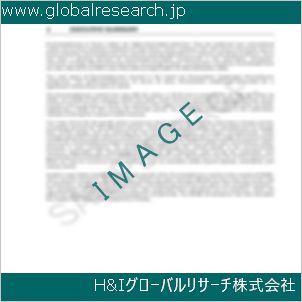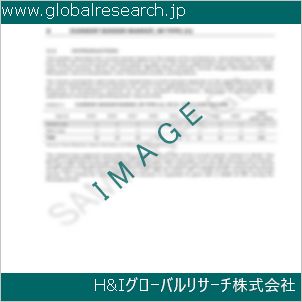1. Preface
1.1. Market Definition and Scope
1.2. Market Segmentation
1.3. Key Research Objectives
1.4. Research Highlights
2. Assumptions and Research Methodology
3. Executive Summary: Global Allergy Immunotherapy Market
4. Market Overview
4.1. Introduction
4.1.1. Product Definition
4.1.2. Industry Evolution / Developments
4.2. Overview
4.3. Market Dynamics
4.3.1. Drivers
4.3.2. Restraints
4.3.3. Opportunities
4.4. Global Allergy Immunotherapy Market Analysis and Forecast, 2017–2031
4.5. Porter’s Five Force Analysis
5. Key Insights
5.1. COVID-19 Pandemic Impact on Industry
6. Global Allergy Immunotherapy Market Analysis and Forecast, by Treatment
6.1. Introduction & Definition
6.2. Key Findings / Developments
6.3. Market Value Forecast, by Treatment, 2017–2031
6.3.1. Subcutaneous Immunotherapy (SCIT)
6.3.2. Sublingual Immunotherapy (SLIT)
6.4. Market Attractiveness Analysis, by Treatment
7. Global Allergy Immunotherapy Market Analysis and Forecast, by Allergy Type
7.1. Introduction & Definition
7.2. Key Findings / Developments
7.3. Market Value Forecast, by Allergy Type, 2017–2031
7.3.1. Allergic Rhinitis
7.3.2. Asthma
7.3.3. Food Allergy
7.3.4. Venom Allergy
7.3.5. Others
7.4. Market Attractiveness Analysis, By Allergy Type
8. Global Allergy Immunotherapy Market Analysis and Forecast, by Distribution Channel
8.1. Introduction & Definition
8.2. Key Findings / Developments
8.3. Market Value Forecast, by Distribution Channel, 2017–2031
8.3.1. Hospital Pharmacies
8.3.2. Retail Pharmacies & Drug Stores
8.3.3. Online Pharmacies
8.4. Market Attractiveness Analysis, By Distribution Channel
9. Global Allergy Immunotherapy Market Analysis and Forecast, by Region
9.1. Key Findings
9.2. Market Value Forecast, by Region
9.2.1. North America
9.2.2. Europe
9.2.3. Asia Pacific
9.2.4. Latin America
9.2.5. Middle East & Africa
9.3. Market Attractiveness Analysis, by Region
10. North America Allergy Immunotherapy Market Analysis and Forecast
10.1. Introduction
10.1.1. Key Findings
10.2. Market Value Forecast, by Treatment, 2017–2031
10.2.1. Subcutaneous Immunotherapy (SCIT)
10.2.2. Sublingual Immunotherapy (SLIT)
10.3. Market Value Forecast, by Allergy Type, 2017–2031
10.3.1. Allergic Rhinitis
10.3.2. Asthma
10.3.3. Food Allergy
10.3.4. Venom Allergy
10.3.5. Others
10.4. Market Value Forecast, by Distribution Channel, 2017–2031
10.4.1. Hospital Pharmacies
10.4.2. Retail Pharmacies & Drug Stores
10.4.3. Online Pharmacies
10.5. Market Value Forecast, by Country, 2017–2031
10.5.1. U.S.
10.5.2. Canada
10.6. Market Attractiveness Analysis
10.6.1. By Treatment
10.6.2. By Allergy Type
10.6.3. By Distribution Channel
10.6.4. By Country
11. Europe Allergy Immunotherapy Market Analysis and Forecast
11.1. Introduction
11.1.1. Key Findings
11.2. Market Value Forecast, by Treatment, 2017–2031
11.2.1. Subcutaneous Immunotherapy (SCIT)
11.2.2. Sublingual Immunotherapy (SLIT)
11.3. Market Value Forecast, by Allergy Type, 2017–2031
11.3.1. Allergic Rhinitis
11.3.2. Asthma
11.3.3. Food Allergy
11.3.4. Venom Allergy
11.3.5. Others
11.4. Market Value Forecast, by Distribution Channel, 2017–2031
11.4.1. Hospital Pharmacies
11.4.2. Retail Pharmacies & Drug Stores
11.4.3. Online Pharmacies
11.5. Market Value Forecast, by Country/Sub-region, 2017–2031
11.5.1. Germany
11.5.2. U.K.
11.5.3. France
11.5.4. Italy
11.5.5. Spain
11.5.6. Rest of Europe
11.6. Market Attractiveness Analysis
11.6.1. By Treatment
11.6.2. By Allergy Type
11.6.3. By Distribution Channel
11.6.4. By Country/Sub-region
12. Asia Pacific Allergy Immunotherapy Market Analysis and Forecast
12.1. Introduction
12.1.1. Key Findings
12.2. Market Value Forecast, by Treatment, 2017–2031
12.2.1. Subcutaneous Immunotherapy (SCIT)
12.2.2. Sublingual Immunotherapy (SLIT)
12.3. Market Value Forecast, by Allergy Type, 2017–2031
12.3.1. Allergic Rhinitis
12.3.2. Asthma
12.3.3. Food Allergy
12.3.4. Venom Allergy
12.3.5. Others
12.4. Market Value Forecast, by Distribution Channel, 2017–2031
12.4.1. Hospital Pharmacies
12.4.2. Retail Pharmacies & Drug Stores
12.4.3. Online Pharmacies
12.5. Market Value Forecast, by Country/Sub-region, 2017–2031
12.5.1. China
12.5.2. India
12.5.3. Japan
12.5.4. Australia & New Zealand
12.5.5. Rest of Asia Pacific
12.6. Market Attractiveness Analysis
12.6.1. By Treatment
12.6.2. By Allergy Type
12.6.3. By Distribution Channel
12.6.4. By Country/Sub-region
13. Latin America Allergy Immunotherapy Market Analysis and Forecast
13.1. Introduction
13.1.1. Key Findings
13.2. Market Value Forecast, by Treatment, 2017–2031
13.2.1. Subcutaneous Immunotherapy (SCIT)
13.2.2. Sublingual Immunotherapy (SLIT)
13.3. Market Value Forecast, by Allergy Type, 2017–2031
13.3.1. Allergic Rhinitis
13.3.2. Asthma
13.3.3. Food Allergy
13.3.4. Venom Allergy
13.3.5. Others
13.4. Market Value Forecast, by Distribution Channel, 2017–2031
13.4.1. Hospital Pharmacies
13.4.2. Retail Pharmacies & Drug Stores
13.4.3. Online Pharmacies
13.5. Market Value Forecast, by Country/Sub-region, 2017–2031
13.5.1. Brazil
13.5.2. Mexico
13.5.3. Rest of Latin America
13.6. Market Attractiveness Analysis
13.6.1. By Treatment
13.6.2. By Allergy Type
13.6.3. By Distribution Channel
13.6.4. By Country/Sub-region
14. Middle East & Africa Allergy Immunotherapy Market Analysis and Forecast
14.1. Introduction
14.1.1. Key Findings
14.2. Market Value Forecast, by Treatment, 2017–2031
14.2.1. Subcutaneous Immunotherapy (SCIT)
14.2.2. Sublingual Immunotherapy (SLIT)
14.3. Market Value Forecast, by Allergy Type, 2017–2031
14.3.1. Allergic Rhinitis
14.3.2. Asthma
14.3.3. Food Allergy
14.3.4. Venom Allergy
14.3.5. Others
14.4. Market Value Forecast, by Distribution Channel, 2017–2031
14.4.1. Hospital Pharmacies
14.4.2. Retail Pharmacies & Drug Stores
14.4.3. Online Pharmacies
14.5. Market Value Forecast, by Country/Sub-region, 2017–2031
14.5.1. GCC Countries
14.5.2. South Africa
14.5.3. Rest of Middle East & Africa
14.6. Market Attractiveness Analysis
14.6.1. By Treatment
14.6.2. By Allergy Type
15. Competition Landscape
15.1. Market Player – Competition Matrix (By Tier and Size of Companies)
15.2. Market Share Analysis, by Company (2021)
15.3. Company Profiles
15.3.1. ALK-Abello A/S
15.3.1.1. Company Overview (HQ, Business Segments, Employee Strength)
15.3.1.2. Treatment Portfolio
15.3.1.3. Financial Overview
15.3.1.4. SWOT Analysis
15.3.1.5. Strategic Overview
15.3.2. Allergy Therapeutics
15.3.2.1. Company Overview (HQ, Business Segments, Employee Strength)
15.3.2.2. Treatment Portfolio
15.3.2.3. Financial Overview
15.3.2.4. SWOT Analysis
15.3.2.5. Strategic Overview
15.3.3. Stallergenes Greer
15.3.3.1. Company Overview (HQ, Business Segments, Employee Strength)
15.3.3.2. Treatment Portfolio
15.3.3.3. Financial Overview
15.3.3.4. SWOT Analysis
15.3.3.5. Strategic Overview
15.3.4. HAL Allergy Group
15.3.4.1. Company Overview (HQ, Business Segments, Employee Strength)
15.3.4.2. Treatment Portfolio
15.3.4.3. Financial Overview
15.3.4.4. SWOT Analysis
15.3.4.5. Strategic Overview
15.3.5. DBV Technologies
15.3.5.1. Company Overview (HQ, Business Segments, Employee Strength)
15.3.5.2. Treatment Portfolio
15.3.5.3. Financial Overview
15.3.5.4. SWOT Analysis
15.3.5.5. Strategic Overview
15.3.6. Merck KGaA
15.3.6.1. Company Overview (HQ, Business Segments, Employee Strength)
15.3.6.2. Treatment Portfolio
15.3.6.3. Financial Overview
15.3.6.4. SWOT Analysis
15.3.6.5. Strategic Overview
15.3.7. Aimmune Therapeutics
15.3.7.1. Company Overview (HQ, Business Segments, Employee Strength)
15.3.7.2. Treatment Portfolio
15.3.7.3. Financial Overview
15.3.7.4. SWOT Analysis
15.3.7.5. Strategic Overview
15.3.8. Carcassia
15.3.8.1. Company Overview (HQ, Business Segments, Employee Strength)
15.3.8.2. Treatment Portfolio
15.3.8.3. Financial Overview
15.3.8.4. SWOT Analysis
15.3.8.5. Strategic Overview
15.3.9. Anergis
15.3.9.1. Company Overview (HQ, Business Segments, Employee Strength)
15.3.9.2. Treatment Portfolio
15.3.9.3. Financial Overview
15.3.9.4. SWOT Analysis
15.3.9.5. Strategic Overview
15.3.10. Biomay AG
15.3.10.1. Company Overview (HQ, Business Segments, Employee Strength)
15.3.10.2. Treatment Portfolio
15.3.10.3. Financial Overview
15.3.10.4. SWOT Analysis
15.3.10.5. Strategic Overview
❖ 免責事項 ❖
http://www.globalresearch.jp/disclaimer












